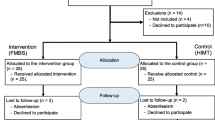Abstract
OBJECTIVE: Today’s medical school graduates have significant deficits in physical examination skills. Medical educators have been searching for methods to effectively teach and maintain these skills in students. The objective of this study was to determine if an auscultation curriculum centered on a portable multimedia CD-ROM was effective in producing and maintaining significant gains in cardiac auscultatory skills.
DESIGN: Controlled cohort study
PARTICIPANTS: All 168 third-year medical students at 1 medical school in an academic medical center.
INTERVENTIONS: Students were tested before and after exposure to 1 or more elements of the auscultation curriculum: teaching on ward/clinic rotations, CD-ROM comprehensive cases with follow-up seminars, and a CD-ROM 20-case miniseries. The primary outcome measures were student performance on a 10-item test of auscultation skill (listening and identifying heart sound characteristics) and a 30-item test of auscultation knowledge (factual questions about auscultation). A subset of students was tested for attenuation effects 9 or 12 months after the intervention.
RESULTS: Compared with the control group (1 month clinical rotation alone), students who were also exposed to the CD-ROM 20-case miniseries had significant improvements in auscultation skills scores (P<.05), but not knowledge. Additional months of clerkship, comprehensive CD-ROM cases, and follow-up seminars increased auscultation knowledge beyond the miniseries alone (P<.05), but did not further improve auscultation skills. Students’ auscultation knowledge diminished one year after the intervention, but auscultation skills did not.
CONCLUSION: In addition to the standard curriculum of ward and conference teaching, portable multimedia tools may help improve quality of physical examination skills.
Similar content being viewed by others
References
Mangione S, Nieman LZ. Cardiac auscultatory skills of internal medicine and family practice trainees: a comparison of diagnostic proficiency. JAMA. 1997;278:717–22.
St. Clair EW, Oddone EZ, Waugh RA, Corey GR, Feussner JR. Assessing housestaff diagnostic skills using a cardiology patient simulator. Ann Intern Med. 1992;117:751–6.
Mangione S, Nieman LZ, Gracely E, Kaye D. The teaching and practice of cardiac auscultation during internal medicine and cardiology training: a nationwide survey. Ann Intern Med. 1993;119:47–54.
Lok CE, Morgan CD, Ranganathan N. The accuracy and inter-observer agreement in detecting the ‘gallop sounds’ by cardiac auscultation. Chest. 1998;114:1283–8.
Mangione S, O’Brien MK, Peitzman SJ. Small group teaching of chest auscultation to third-year medical students. Acad Med. 1997;72:121–3S.
Grady D. Listening to the heart: dying art? New York Times. September 3, 1997:9C.
Roldan CA, Shively BK, Crawford MH. Value of the cardiovascular physical examination for detecting valvular heart disease in asymptomatic subjects. Am J Cardiol. 1996;77:1327–31.
Gillespie ND, McNeill G, Pringle T, Ogston S, Struthers AD, Pringle SD. Cross-sectional study of contribution of clinical assessment and simple cardiac investigations to diagnosis of left ventricular systolic dysfunction in patients admitted with acute dyspnoea. BMJ. 1997;314:936–40.
Agency for Health Care Policy and Research. Heart failure: evaluation and care of patients with left-ventricular systolic dysfunction. Rockville, Md: U.S. Department of Health and Human Services, Public Health Service; 1994.
Mangione S, Nieman LZ, Greenspon LW, Marguiles H. A comparison of computer-assisted instruction and small-group teaching of cardiac auscultation to medical students. Med Educ. 1991;25(5):389–95.
Champagne MT, Harrell JS, Friedman BJ. Use of a heart sound simulator in teaching cardiac auscultation. Focus on Critical Care. 1989;16:448–56.
Finley JP, Sharratt GP, Nanton MA, Chen RP, Roy DL, Paterson G. Auscultation of the heart: a trial of classroom teaching versus computer-based independent learning. Med Educ. 1998;32:357–61.
Tavel ME, Brown DD, Shander D. Enhanced auscultation with a new graphics display system. Arch Intern Med. 1994;15:893–8.
Petrusa ER, Issenberg SB, Mayer JW, et al. Implementation of a four-year multimedia computer curriculum in cardiology at six medical schools. Acad Med. 1999;74:123–9.
Issenberg SB, Petrusa ER, McGaghie WC, et al. Effectiveness of a computer-based system to teach bedside cardiology. Acad Med. 1999;74:93–5S.
Lyon HC Jr, Healy JC, Bell JR, et al. PlanAnalyzer, an interactive computer-assisted program to teach clinical problem solving in diagnosing anemia and coronary artery disease. Acad Med. 1992;67:821–8.
U.S. Congress, Office of Technology Assessment. Technology and the American Economic Transition: Choices for the Future. Washington, DC: U.S. Government Printing Office; May, 1998.
Desch LW, Esquival MT, Anderson SK. Comparison of a computer tutorial with other methods for teaching well newborn care. Am J Dis Child. 1991;145:1255–8.
Chew FS, Smirniotopoulos JG. Educational efficacy of computer-assisted instruction with interactive videodisc in radiology. Invest Radiol. 1993;28:1052–8.
Mitchell JA, Bridges AJ, Reid JC, Cutts JH III, Hazelwood S, Sharp GC. Preliminary evaluation of learning via the AI/LEARN/Rheumatology interactive videodisc system. Proceedings of the 16th Annual Symposium on Computer Applications in Medical Care. Washington, DC: IEEE Society Press; 1992:169–73.
Calderone AB. Computer-assisted instruction: learning, attitude and modes of instruction. Comput Nurs. 1994;12:164–70.
Kroenke K, Omori DM, Landry FJ, Lucey CR. Bedside teaching. South Med J. 1997;90:1069–74.
LaCombe MA. On bedside teaching. Ann Intern Med. 1997;126:217–20.
Nardone DA, Lucas LM, Palac DM. Physical examination: a revered skill under scrutiny. South Med J. 1988;81:770–3.
Westman EC, Matchar DB, Samsa GP. Accuracy and reliability of apical S3 gallop detection. J Gen Intern Med. 1995;10:455–7.
Author information
Authors and Affiliations
Corresponding author
Additional information
This study was supported, in part, through a grant from the 3M Health Care Corporation.
Rights and permissions
About this article
Cite this article
Stern, D.T., Mangrulkar, R.S., Gruppen, L.D. et al. Using a multimedia tool to improve cardiac auscultation knowledge and skills. J GEN INTERN MED 16, 763–769 (2001). https://doi.org/10.1111/j.1525-1497.2001.10347.x
Issue Date:
DOI: https://doi.org/10.1111/j.1525-1497.2001.10347.x




